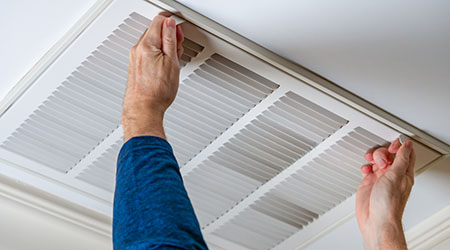Slowly over the last 16 months, healthcare facilities managers and many other interested parties came to the realization that while the coronavirus might be transmitted via surface contact, the greater threat came from its ability to move through the air. As a result, managers have focused much more attention on effective HVAC system operation, especially related to airflow and ventilation. Now, managers need to consider revisiting their facilities’ indoor air quality (IAQ) programs.
The situation requires a holistic integrated IAQ solution that is informed and addresses core IAQ problems and that uses complementary technologies across building management, according to Infection Control Today. The effort requires:
an alignment of HVAC system performance with building pressurization
air filtration requirements and a customizable safe air purification system
a network of air management sensors (differential pressure, carbon monoxide, carbon dioxide, thermal, moisture, and airflow) that supply real-time building analytics.
Combined, these parameters optimize cost, performance efficiency, and infection control. A solution where IAQ can be quantified and improved will provide a healthy environment and a long-term ventilation solution. The ability to respond to current and future infection control concerns will be addressed, and the improved indoor air quality will be measurable.

 Grounding Healthcare Spaces in Hospitality Principles
Grounding Healthcare Spaces in Hospitality Principles UC Davis Health Selects Rudolph and Sletten for Central Utility Plant Expansion
UC Davis Health Selects Rudolph and Sletten for Central Utility Plant Expansion Cape Cod Healthcare Opens Upper 2 Floors of Edwin Barbey Patient Care Pavilion
Cape Cod Healthcare Opens Upper 2 Floors of Edwin Barbey Patient Care Pavilion Building Sustainable Healthcare for an Aging Population
Building Sustainable Healthcare for an Aging Population Froedtert ThedaCare Announces Opening of ThedaCare Medical Center-Oshkosh
Froedtert ThedaCare Announces Opening of ThedaCare Medical Center-Oshkosh